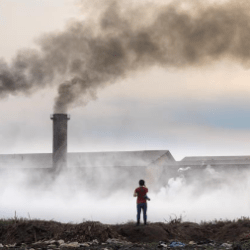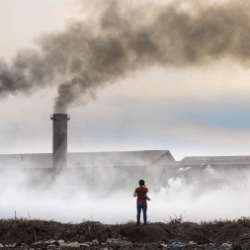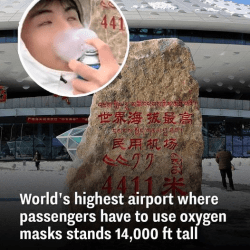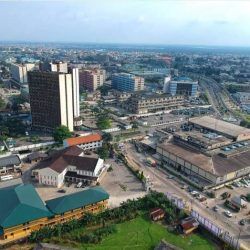Few things are as vital to sustaining human life as air. The average adult breathes more than 10,000 liters of air per day, supplying air deep into the body’s respiratory and pulmonary system and delivering the oxygen necessary for core cognitive and physical functions.

While air may appear to be abundant, safe air is remarkably scarce.
Human activities have resulted in such widespread degradation of air quality that, today, the vast majority of the world’s population inhales unsafe levels of air pollution.
The air in most inhabited areas exhibits unnaturally high concentrations of a range of toxic pollutants, including particulate matter, ozone, NO2 , carbon monoxide, and SO2.
Many of these pollutants are gases or tiny particles that pass directly through the lungs and enter the bloodstream, affecting vital organs, such as the heart and lungs.
The use of polluting fossil fuels contributes substantially to a vast environmental and health crisis.
- Clean air is key for sustaining life, yet 94 percent of the world population is exposed to toxic levels of air pollution. As this part of the report shows, air pollution is one of the most far-reaching environmental crises facing the world and—like climate change—is linked directly to the underpricing and overuse of polluting fossil fuels.
- Air pollution is a toxic medley of many different pollutants from many different sources, including particulate matter (PM2.5), nitrogen oxides (NOx), sulfur dioxide (SO2), and black carbon, among others. Many of these pollutants are generated directly through the combustion of fossil fuels
that are cheaply available. Others are generated through polluting industrial processes, residential uses (such as heating), and transport systems. Dust storms and forest fires add to these anthropogenic sources of pollution, reducing air quality both outdoors and inside people’s homes. - Accounting for about 7 million premature deaths each year, air pollution is one of the leading causes of death worldwide, especially affecting poorer people who are both more exposed and more vulnerable to it. The burden of pollution is particularly high in rapidly industrializing middle-income countries, but low-income countries have a window of opportunity to follow a cleaner, more efficient development trajectory.
- Reforming explicit fossil fuel subsidies is a necessary but insufficient step to tackling the air pollution challenge. Policy makers must fully reflect the health and societal costs of air pollution in the price of fossil fuels and implement complementary policies that enable the transition to clean and efficient technologies.
Yet governments around the world explicitly subsidize the consumption of these fuels to the tune of around US$577 billion a year, entrenching their adverse effects. These subsidies perpetuate air pollution that aggravates a wide range of diseases, which, in turn, reduce quality of life, suppress productivity, increase health expenditures, and thus undermine countries’ overall development prospects.
7.3 billion people, or 94 percent of the world’s population, are exposed directly to unsafe average annual concentrations of fine particulate matter—one of the most pervasive air pollutants. And the scientific evidence is unequivocal that such air pollution has wide-ranging and profound impacts on human health and well-being. Based on the latest medical evidence, the World Health Organization (WHO) updated its air quality guidelines in 2021, significantly tightening the stringency of its 2005 guidelines (WHO 2021b).
The revised threshold reflects a growing body of medical evidence on the wide-ranging global burden of disease associated with air pollution. There is strong evidence of the causal relationship between air pollution—especially particulate matter, ozone, NO2 , and SO2—and all-cause mortality (WHO 2021b).
Estimates of the number of people affected by air pollution–related diseases vary, but they are uniformly staggering. For instance, the 2019 Global Burden of Disease report estimates that 4.5 million premature deaths are due to ambient air pollution, and another 2.3 million premature deaths are due to indoor air pollution each year (IHME 2020). PM2.5 is responsible for the vast majority of air pollution–related deaths, and its impacts are on the rise.
Between 2000 and 2019, PM2.5-attributable deaths increased in all regions except Europe, Latin America, and North America (Southerland et al. 2022). This report assesses the extent to which subsidies may be responsible for this damage. Poverty and exposure to air pollution Poor people tend to be more exposed and more vulnerable to air pollution than rich people.
A growing base of evidence shows that exposure to, and impact from, air pollution is not distributed equally and the feedback effects are discriminating. As health and productivity suffer, evidence from the United States has shown that air pollution reinforces socioeconomic inequalities. Poor and marginalized groups are often exposed to higher levels of pollution. In addition, these groups tend to be more vulnerable to the impacts of pollution, since they may have comorbidities and low-paying jobs that are more likely to require physical and outdoor labor and therefore entail heightened exposure.
Pollution sources, such as industrial plants or transport corridors, are disproportionately located in low income neighborhoods across the United States. The use of subsidized yet polluting biofuels for cooking, heating, and lighting further degrades air quality, especially for persons who cannot afford cleaner alternatives.
And as air pollution increases, housing prices decline, which reinforces the low-income status of neighborhoods. Constraints regarding the availability and quality of health care further increase air pollution–related mortality among low-income groups. In short, evidence from the United States indicates that social and economic marginalization makes people more exposed and more vulnerable to air pollution. In contrast, there is very limited evidence of the links between poverty, minority status, and exposure to harmful air pollution in low- and middle-income countries and at the global scale.
A better understanding of the interplay between air pollution and poverty is crucial for several reasons. For one, correlations observed in the United States may not hold in low-income countries, where the nature of occupations and health care differs substantially. For another, if the implications of unsafe air pollution for health and productivity are significant, they may affect the development prospects and growth out of poverty, especially in low- and middle-income countries. This possibility is especially pertinent in low-income countries, which—as this study shows— tend to have relatively low levels of pollution compared to more industrial, middle-income countries. These countries may have an opportunity to grow wealthier without having to grow dirtier first.
Reference: World Bank https://openknowledge.worldbank.org/server/api/core/bitstreams/61d04aca-1b95-4c06-8199-3c4a423cb7fe/content


















